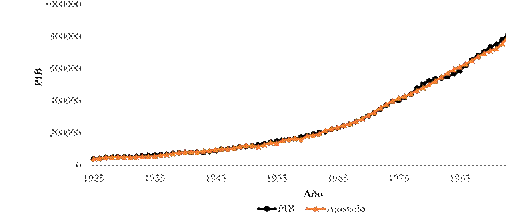Procedimiento de optimización no lineal para la cuantificación del aporte de la energía eléctrica en el crecimiento económico colombiano, 1925-1997
DOI:
https://doi.org/10.17533/udea.le.n93a341714Palabras clave:
Crecimiento económico, elasticidad de un factor, función de producción LINEX, procedimiento de ajuste no linealResumen
En este trabajo se incluye la energía eléctrica (E) como una tercera variable en la función de producción estándar Cobb-Douglas para determinar su participación en el PIB de Colombia y calcular su elasticidad asociada entre 1925 y 1997. Para tal efecto, se emplean el modelo LINEX y el algoritmo de optimización no lineal de Levenberg-Marquardt, bajo el supuesto de elasticidades de producción no negativas para ajustar la función de producción, corregida y basada en dicho modelo. El análisis se alimenta de las series de PIB, capital (K) y trabajo (L) que elaboró el GRECO para el Banco de la República, y también de una serie temporal de energía eléctrica (E) producida con el patrocinio de Colciencias. Los resultados calculados para las elasticidades asociadas permiten verificar que, en concordancia con los casos de estudio conocidos, la energía eléctrica ha tenido mayor peso en la estructura del PIB que los factores tradicionales. Se concluye que la condición de rendimientos constantes de la función de producción estándar no se aplica a ninguna economía conocida, sea esta de un país desarrollado o no.
Descargas
Citas
Akarka, A. & Long, T.-V. (1980). On the relationship between energy and GNP: A reexamination, Journal of Energy and Development, 5(2), 326-331.
Alam, S. (2009). Bringing energy back into the economy: examining economic growth with energy, Review of Radical Political Economics, 41(2), 170-185.
Allen, E. L. (1979). Energy and Economic Growth in the United States, Massachusetts: The MIT Press
Altinay, G. & Karagol, E. (2004). Structural break, unit root, and the casuality between energy consumption and GDP in Turkey, Energy Economics, 26(6), 985-994.
Apergis, N. & Payne, J. (2010a). Coal consumption and economic growth: Evidence from a panel of OECD countries, Energy Policy, 38(3), 1353-1359.
Apergis, N. & Payne, J. (2010b). Energy consumption and growth in South America: Evidence from a panel error correction model, Energy Economics, 32(6), 1421-1426.
Asafu-Adjaye, J. (2000). The relationship between energy consumption, energy prices and economic growth: time series evidence from Asian developing countries, Energy Economics, 22(6), 615-625.
Aspe, P., Dornbusch, R. & Obstfeld, M. (1983). Financial Policies and the World Capital Market: The Problem of Latin American Countries, Chicago: University of Chicago Press.
Ayres, R. (1978). Application of Physical Principles to Economics, Resources, Environment and Economics: Applications of the Materials/Energy Balance Principle. New York: Jhon Wiley y Sons.
Ayres, R. (1994). Information, Entropy, and Progress: A New Evolutionary Paradigm. New York: AIP Press.
Ayres, R. (1998). Technological progress: a proposed measure, Technological Forecasting and Social Change, 59(3), 213-233.
Ayres, R. (2001). The minimum complexity of endogenous growth: the role of physical resource flows, Energy - The International Journal, 26(9), 817-838.
Ayres, R. & Ayres, E. (2010). Crossing the Energy Divide: Moving from Fossil Fuel Dependence to a Clean-Energy Future, New Jersey: Prentice Hall
Ayres, R. & Warr, B. (2003). Exergy, power and work in the US economy 1900-1998, Energy - The International Journal, 28(3), 219-273.
Ayres, R. & Warr, B. (2005). Accounting for growth: the role of physical work, Structural Change and Economic Dynamics, 16(2), 181–209
Ayres, R. & Warr, B. (2009). The Economic Growth Engine: How energy and work drive material prosperity, Northampton-Massachusetts: Edward Elgar Publishing, Inc.
Ayres, R. & Voudouris, V. (2014), The economic growth enigma: Capital, labor, and useful energy?, Energy Policy, 64(1), 16-28.
Barreto, C. A. & Campo R., J. (2012). Relación a largo plazo entre consumo de energía y PIB en América Latina: Una evaluación empírica con datos panel. Ecos de Economía, 16(35), 73-89.
Beaudreau, B. (1995). The impact of electric power in productivity: A study of US manufacturing 1950-1984, Energy Economics, 17(3), 231-236.
Beaudreau, B. (1998). Energy and Organization: Growth and Distribution Reexamined, Santa Barbara: Greenwood Press.
Beaudreau, B. (2005). Engineering and economic growth, Structural Change and Economic Dynamics, 16(2), 211-220.
Belke, A., Dobnik, F. & Dreger, C. (2011). Energy consumption and economic growth: new insights into the cointegration relationship, Energy Economics, 33(5), 782-789.
Belloumi, M. (2009). Energy consumption and GDP in Tunisia: Cointegration and causality analysis, Energy Policy, 37(7), 2745-2753.
Berndt, E. R.. & Wood, D.O. (1975). Technology, Prices, and the Derived Demand for Energy. The Review of Economics and Statistics, 17(3), 259-268.
Bildirici, M. & Kayikci, F. (2012). Economic growth and electricity consumption in former Soviet Republics, Energy Economics, 34(3), 747-753.
Brock, W. & Taylor, S. (2010). The green Solow model. Journal of Economic Growth, 15(2), 127-153.
Campo R., J. & Sarmiento, V. (2011). Un modelo de corrección de errores para la relación entre el consumo de energía y el PIB en Colombia (1970-2009). Revista Finanzas y Política Económica, 3(1), 59-70.
Cheng, B. (1997). Energy consumption and Economic Growth in Brazil, Mexico and Venezuela: A Time Series Analysis, Applied Economics Letters, 4(11), 671-674.
Chiou-Wei, S-Z., Chen, C.-F. & Zhu, Z. (2008). Economic growth and energy consumption revisited - Evidence from linear and nonlinear Granger causality, Energy Economics, 30(6), 3063-3076.
Chontanawat, J., Hunt, L. & Pierse, R. (2008). Does energy consumption cause economic growth? Evidence from a systematic study over 100 countries, Journal of Policy Modeling, 30(2), 209-220.
Cobb, G. W., and Douglas, P.N. (1928). A theory of production. American Economic Review, 18(1), 139-165.
Cottrell, F. (1955). Energy and Society. New York: McGraw Book Company.
Ebohon, O.-J. (1996). Energy, Economic Growth and Causality in Developing Countries: A Case Study of Tanzania and Nigeria, Energy Policy, 24(5), 447-453.
Esso, L. & Keho, Y. (2016). Energy consumption, economic growth, and carbon emissions: Cointegration and causality evidence from selected African countries, Energy, 114(2), 492-497
Farhani, S. & Ben-Rejeb, J. (2012). Link between Economic Growth and Energy Consumption in Over 90 Countries, Interdisciplinary Journal of Contemporary Research in Business, 3(11), 282-297.
Fouquet, R., and Pearson, J.G. (1998). A Thousand Years of Energy Use in the United Kingdom. The Energy Journal, 19(4), 1-41.
Georgescu-Roegen, N. (1971). The Entropy Law and the Economic Process. Cambridge: Harvard University Press.
Georgescu-Roegen, N. (1975). Energy and Economic Myths, Southern Economic Journal, 41(3), 347-381.
Georgescu-Roegen, N. (1977). The Steady State and Ecological Salvation: A Thermodynamic Analysis, BioScience, 27(4), 266-270.
GRECO (Grupo de Estudios del Crecimiento Económico), GRECO (2004), El Crecimiento Económico Colombiano en el siglo XX, Bogotá: Banco de la República.
Gurgul, H. & Lach, L. (2012). The electricity consumption versus economic growth of the Polish economy, Energy Economics, 34(2), 500-510.
Hall, C. & Klitgaard, K. (2012). Energy and the Wealth of Nations: Understanding the Biophysical Economy, New York: Springer
Hall, C., Lindenberger, D., Kümmel, R., Kroeger, T. & Eichhorn, W. (2001). The Need to Reintegrate the Natural Sciences with Economics, BioScience, 51(8), 663-673
Hannon, B. & Joyce, J. (1981). Energy and Technical Progress. Energy, 6(2), 187-195.
Henderson, F. (1933). The Economic Consequences of Power Production. London: George Allen & Unwin Ltd.
Humphrey, W. S., and Stanislav, J. (1979). Economic growth and energy consumption in the UK, 1700-1975. Energy Journal, 7(1), 29-42.
Hwang, D. & Gum, B. (1991). The causal relationship between energy and GNP: the case of Taiwan, The Journal of Energy and Development, 16(2), 219-226.
Jensen, W. G. (1970). Energy and the Economy of Nations, Atlanta: G.T. Foulis and Co, Henley-on-Thames.
Jorgenson, D. W. (1978). The Role of Energy in the U. S. Economy, National Tax Journal, 31(3), 209-220.
Jorgenson, D. W. (1981). Energy Prices and Productivity Growth, The Scandinavian Journal of Economics, 83(2), 165-179.
Jorgenson, D. (1984). The role of energy in productivity growth, The Energy Journal, 5(3), pp. 11-26
Kalmanovitz, S. (2010). Nueva historia económica de Colombia, Bogotá D.C.: Taurus - UJTL.
Kraft, J. & Kraft, A. (1978). On the relationship between energy and GNP, Journal of Energy and Development, 3(2), 401-403.
Kümmel, R. (1980). Growth Dynamics of the Energy Dependent Economy, Cambridge: Oelgeschlager, Gun & Hain.
Kümmel, R. (1982). The impact of energy on industrial growth. Energy, 7(2), 189-203.
Kümmel, R. (1989). Energy as factor of production and entropy as a pollution indicator in macroeconomic modeling, Ecological Economics, 1(2), 161-180.
Kümmel, R., Strassl, W., Gossner, A. & Eichhorn, W. (1985). Technical progress and energy dependent production functions, Zeitschrift für Nationalökonomie Journal of Economics, 45(3), 285-311.
Kümmel, R., Lindenberger, D. & Eichhorn, W. (2000). The productive power of energy and economic evolution, Indian Journal of Applied Economics, 8(2), 231-262.
Kümmel, R., Henn, J. & Lindenberger, D. (2002). Capital, labor, energy, and creativity: modeling innovation diffusion, Structural Change and Economic Dynamics, 13(4), 415-433
Kümmel, R., Ayres, R. & Lindeberger, D. (2010). Thermodynamics laws, economic methods and the productive power of energy, Journal of Non-Equilibrium Thermodynamics, 35(2), 145-179.
Kümmel, R. (2011). The Second Law of Economics: Energy, Entropy, and The Origins of Wealth, New York: Springer.
Kümmel, R. y Lindenberger, D. (2014), How energy conversion drives economic growth far from the equilibrium of neoclassical economics, New Journal of Physics, 16(12), 1-21.
Kümmel, R., Lindenberger, D. & Weiser, F. (2015). The economic power of energy and the need to integrate it with energy policy, Energy Policy, 86, 833-843.
Lee, C.-C. (2006). The casuality relationship between energy comsuption and GDP in G-11 countries revisited, Energy Policy, 34(9), 1086-1093.
Lee, C.-C. & Chang, C.-P. (2007). Energy consumption and GDP revisited: a panel analysis of developed and developing countries, Energy Economics, 29(6), 1206-1223.
Lindenberger, D. & Kümmel, R. (2011). Energy and the state of nations, Energy, 36(10), 6010-6018.
Lindenberger, D., Weiser, F., Winkler, T. y Kümmel, R. (2017). Economic Growth in the USA and Germany 1960–2013: The Underestimated Role of Energy, Biophysical Economics and Resource Quality, 2(3), 1-23.
Lotka, A. J. (1922). Contribution to the energetics of evolution. Proceedings of the National Academy of Sciences; 8, 147-151.
Nachane, D., Nadkarni, R. & Karnik, A. (1988). Co-integration and causality testing of the energy-GDP relationship: a cross-country study, Applied Economics, 20(11), 1511-1531.
Nahman, A. & Antrobus, G. (2005). The environmental Kuznets curve: a literature review. South African Journal of Economics, 73(1), 105-120.
Narayan, P.-K. & Popp, S. (2012). The energy consumption-real GDP nexus revisited: empirical evidence from 93 countries, Economic Modelling, 29(2), 303-308.
Nordhaus, W. D. (2008). A Question of Balance: Weighing the Options on Global Warming Policies, New Haven, Connecticut: Yale University Press.
Ocampo, J. A. & Montenegro, S. (1982). La crisis mundial de los años treinta en Colombia, Desarrollo y Sociedad, 7(1), 37-95.
Oh, W. y Lee, K. (2004). Casual relationship between energy conpsumption and GDP revisited: the case of Korea 1970-1999, Energy Economics, 26(1), 51-59.
Ostwald, W. (1907). The Modern Theory of Energetics. The Monist, 17(4), 481-515.
Ozturk, I., Aslan, A. & Kalyoncu, H. (2010). Energy consumption and economic growth relationship: Evidence from panel data for low and middle income countries, Energy Policy, 38(8), 4422-4428.
Pokrovski, V. (2003). Energy in the theory of production, Energy, 28(8), 769-788.
Pokrovski, V. (2007). Productive energy in the US economy, Energy, 32(5), 816-822.
Ricci, F. (2007). Channels of transmission of environmental policy to economic growth: a survey of the theory. Ecological Economics, 60(4), 688-699.
Rifkin, J. (2011). La Tercera Revolución Industrial, Barcelona: Paidós.
Schurr, S. H. & Netschert, B. C. (1960). Energy in the American Economy, 1850-1975 (Series). Baltimore, MD, Johns Hopkins University Press.
Schurr, S., Burwell, C., Devine, W. & Sonenblum, S. (1990). Electricity in the American Economy: Agent of technological progress, Santa Barbara: Greenwood Praeger
Sharma, S.-S. (2010). The relationship between energy and economic growth: Empirical evidence from 66 countries, Applied Energy, 87(11), 3565-3574.
Shengfeng, X., Sheng, X.-M., Tianxing, Z. & Xuelli, Z. (2012). The relationship between Electricity Consumption and Economic Growth in China, Physics Procedia, 24(Part A), 56-62.
Shiu, A. & Lam, P.-L. (2004). Electricity consumption and economic growth in China, Energy Policy, 32(1), 47-54.
Shuyun, Y. & Donghu, Y. (2011). The causality between energy consumption and economic growth in China: using panel method in a Multivariate Framework, Energy Procedia, 5, 808-812.
Smil, V. (2005). Energy and the Crossroads: Global Perspectives and Uncertainties, Cambridge: MIT Press.
Soddy, F. (1912). Matter and Energy. London: Oxford University Press.
Solow, R. M. (1956). A contribution to the theory of economic growth, The Quarterly Journal of Economics, 70(1), 65-94.
Solow, R. M. (1957). Technical Change and the Aggregate Production Function, The Review of Economics and Statistics, 39(3), 312-320.
Solow, R. M. (1994). Perspectives on Growth Theory, The Journal of Economic Perspectives, 8(1), 45-54.
Soytas, U. & Sari, R. (2003). Energy consumption and GDP: Causality relationship in G-7 countries and emerging markets, Energy Economics, 25(1), 33-37.
Squalli, J. (2007). Electricity consumption and economic growth: bounds and causality analyses of OPEC members, Energy Economics, 29(6), 1192-1205.
Stern, D. I. (1993). Energy and economic growth in the USA: a mutivariate approach, Energy Economics, 15(2), 137-150.
Stern, D. I. (2004). Economic Growth and Energy. Encyclopedia of Energy, 2, 35-51.
Tyron, F. G. (1927). An Index of Consumption of Fuels and Water Power, Journal of The American Statistical Association, 22(159), 271-282.
Yalta, T. & Cakar, H. (2012). Energy consumption and economic growth in China: A reconciliation, Energy Policy, 41, 666-675.
White, L. A. (1943). Energy and the evolution of culture. American Anthropologist, 45(3, Part 1), 335-356.
Wolde-Rufael, Y. (2009). Energy consumption and economic growth: The experience of African countries revisited, Energy Economics, 31(2), 217-224.
Yildirim, E. & Aslan, A. (2012). Energy consumption and economic growth nexus for 17 highly developed OECD countries: Further evidence based on bootstrap-corrected causality tests, Energy Policy, 51, 985-993.
Yoo, S.-H. (2006). The casual relationship between electricity consumption and economic growth in the ASEAN countries, Energy Policy, 34(18), 3573-3582.
Yu, E. & Choi, J.-Y. (1985). The casual relationship between energy and GNP: An international comparison, Journal of Energy and Development, 10(2), 249-272.
Yuan, J.-H., Kang, J.-G., Zhao, C.-H. & Hu, Z.-G. (2008). Energy consumption and economic growth: Evidence from China at both aggregated and disaggregated levels, Energy Economics, 30(6), 3077-3094.
Zhang, C. y Xu, J. (2012). Retesting the causality between energy consumption and GDP in China: Evidence from sectoral and regional analyses using dynamic panel data, Energy Economics, 34(6), 1782-1789.
Publicado
Cómo citar
Número
Sección
Licencia
Derechos de autor 2020 Oscar Gonzalo Manrique Díaz, Diego Fernando Lemus Polanía

Esta obra está bajo una licencia internacional Creative Commons Atribución-NoComercial-CompartirIgual 4.0.
Este sitio web, por Universidad de Antioquia, está licenciado bajo una Creative Commons Attribution License.
Los autores que publiquen en esta revista aceptan que conservan los derechos de autor y ceden a la revista el derecho de la primera publicación, con el trabajo registrado con una Licencia de Atribución-NoComercial-CompartirIgual de Creative Commons, que permite a terceros utilizar lo publicado siempre que mencionen su autoría y a la publicación original en esta revista.
Los autores pueden realizar acuerdos contractuales independientes y adicionales para la distribución no exclusiva de la versión del trabajo publicada en la revista (por ejemplo, incluirla en un repositorio institucional o publicarla en un libro) siempre que sea con fines no comerciales y se reconozca de manera clara y explícita que el artículo ha sido originalmente publicado en esta revista.
Se permite y recomienda a los autores publicar sus artículos en Internet (por ejemplo, en páginas institucionales o personales), ya que puede conducir a intercambios provechosos y a una mayor difusión y citación de los trabajos publicados.


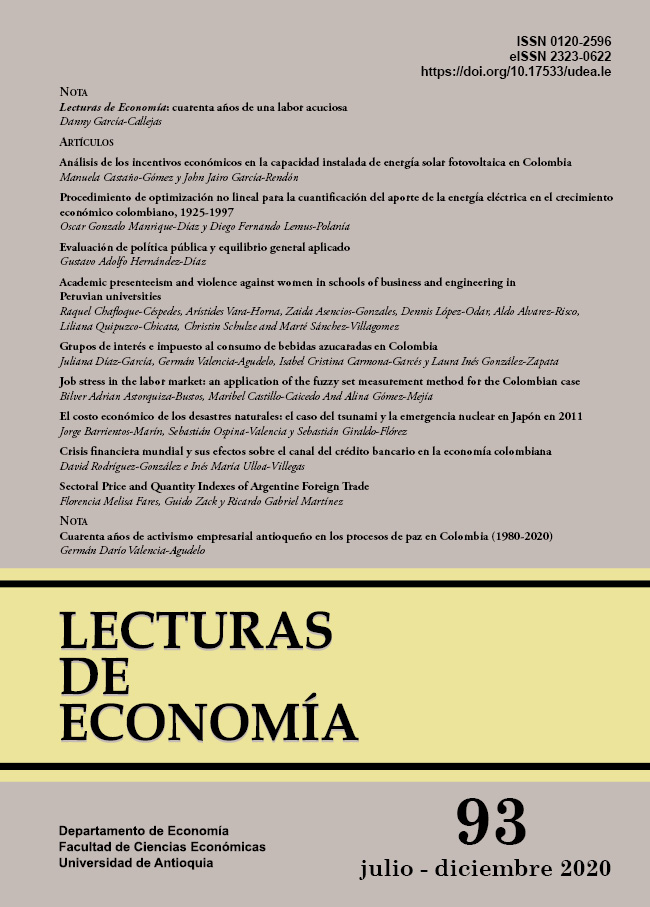






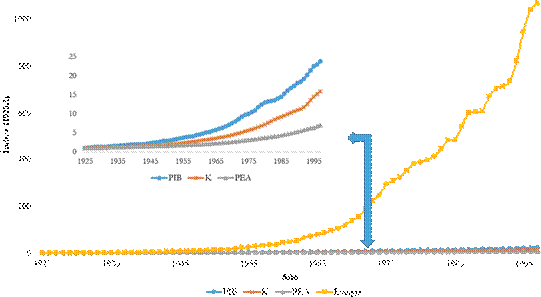
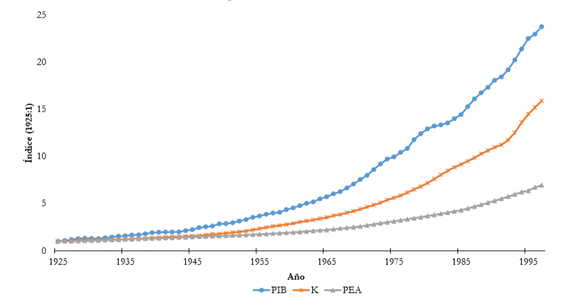

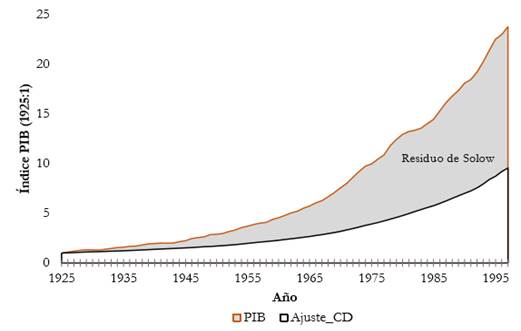
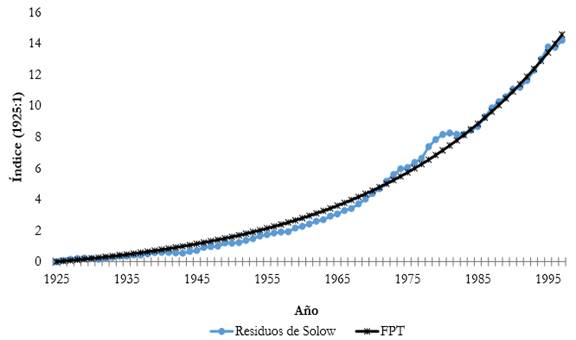









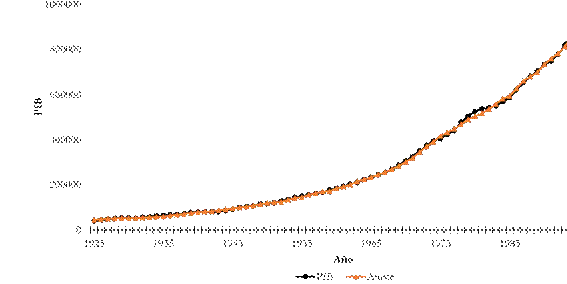





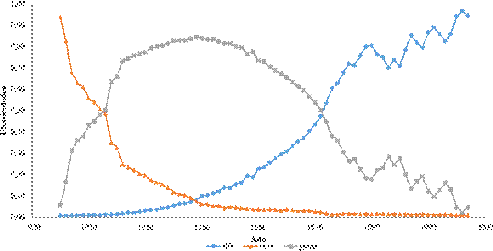
 β = 0,1359: promedio asociado a la población económicamente activa.
β = 0,1359: promedio asociado a la población económicamente activa.